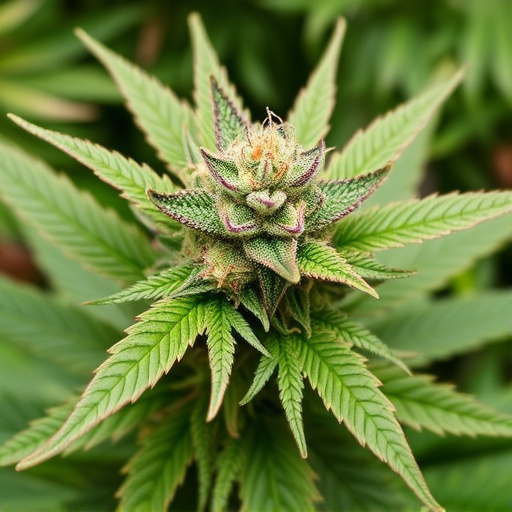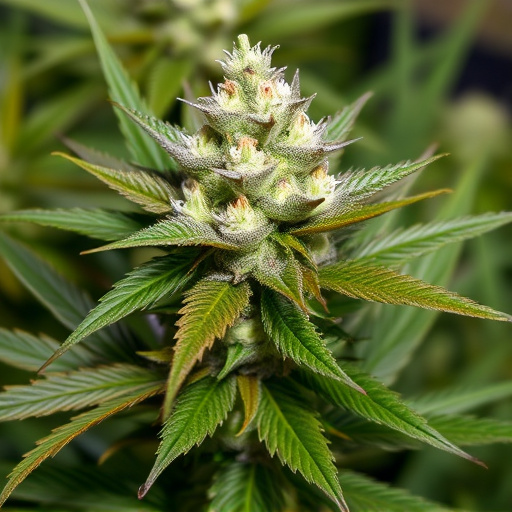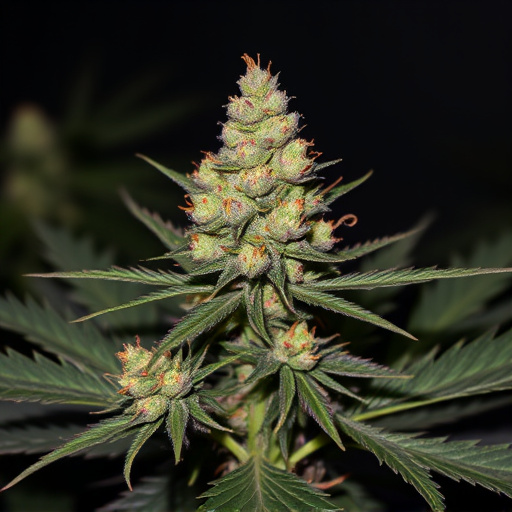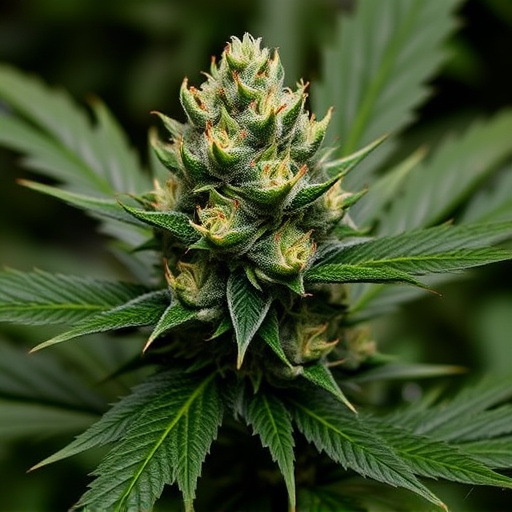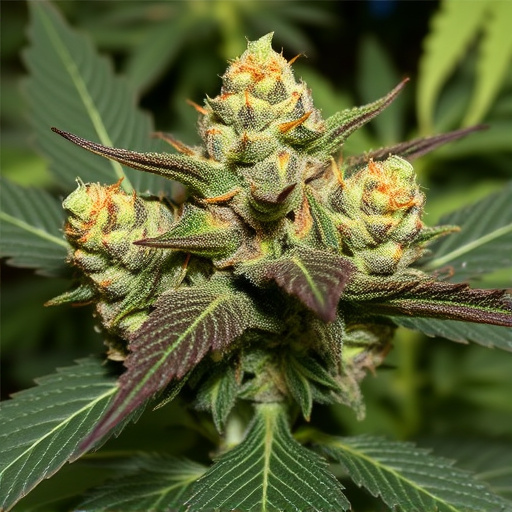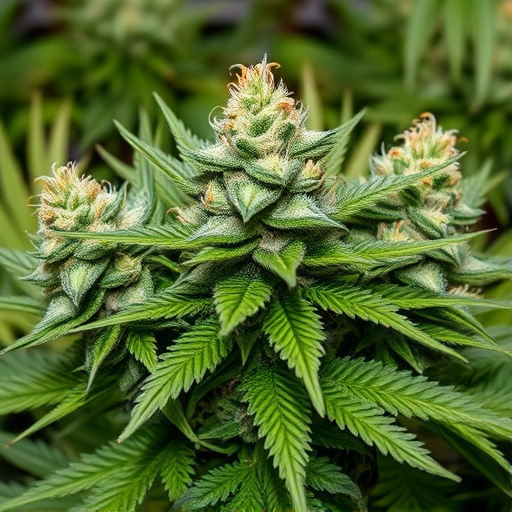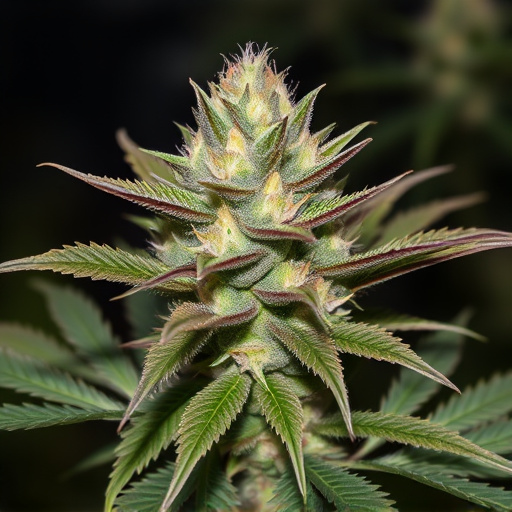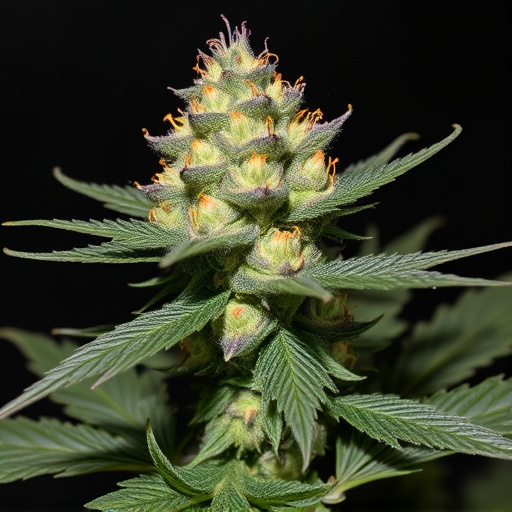Indica dominant hybrid cannabis strains are characterized by broad leaves, shorter internodes, dense flowers with high resin content, and unique earthy or woody flavors. These traits lead to sought-after relaxing and sedative effects for stress, anxiety, and sleep issues. Cultivators use genetic knowledge to breed consistent quality varieties, with temperature playing a critical role in visual and chemical profiles. Optimal temperature control enhances cannabinoid levels and desired plant characteristics, enabling cultivation of visually stunning, high-quality indica dominant hybrid strains.
Discover the captivating interplay between genetics and temperature, and their profound impact on cannabis appearance. This article delves into the intricate world of indica dominant hybrid strains, exploring how their unique genetic makeup shapes distinctive visual traits. Furthermore, we examine the role of environmental conditions, specifically temperature, in modifying cannabis visuals and effects. By understanding these factors, cultivators can strategically breed and cultivate for desired appearances, offering a tailored experience to cannabis enthusiasts.
- The Role of Genetics in Cannabis Appearance: Unraveling the Traits of Indica Dominant Hybrid Strains
- Temperature's Impact: How Environmental Factors Shape Cannabis Visuals and Effects
- Understanding the Intersection: Exploring Genetic Modifications for Desired Appearance in Cannabis Cultivation
The Role of Genetics in Cannabis Appearance: Unraveling the Traits of Indica Dominant Hybrid Strains
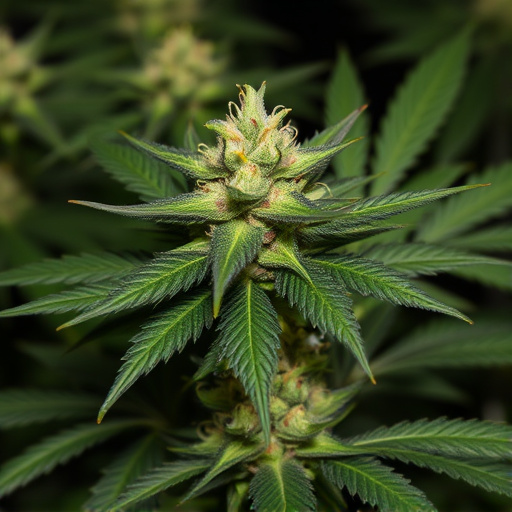
The genetics of cannabis play a profound role in shaping its appearance, from leaf structure to color and even resin production. Indica dominant hybrid strains, for instance, often exhibit distinct characteristics that set them apart. These plants tend to have broader leaves with shorter internodes (the spaces between leaves), contributing to their bushy, compact growth pattern. The flowers of indica strains often feature a more dense and fluffy structure, with higher concentrations of resin glands, which can result in a higher THC content.
The genetic makeup also influences the flavor profiles, aroma, and potential therapeutic effects. Indica dominant hybrids may present earthy, musky, or woody notes, providing a unique sensory experience. These strains are often sought after for their relaxing and sedative properties, making them popular among users looking for relief from stress, anxiety, or sleep disorders. Understanding the genetic traits of different cannabis varieties allows cultivators to carefully breed plants to achieve desired characteristics, ensuring consistent quality and desirable effects.
Temperature's Impact: How Environmental Factors Shape Cannabis Visuals and Effects
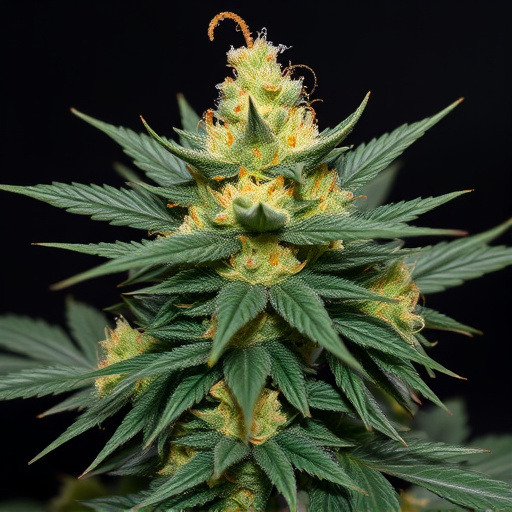
Temperature plays a significant role in shaping the visual appearance and effects of cannabis, particularly in indica dominant hybrid strains. Environmental factors, such as growing temperature, can influence the plant’s overall structure, leaf color, and even the concentration of terpenes—compounds responsible for cannabis’ unique aromas and potential therapeutic benefits. Warmer temperatures tend to encourage faster growth, leading to taller plants with broader leaves, often resulting in a denser final product. Conversely, cooler temperatures can slow down growth, producing more compact and shorter plants with narrower leaves, which may impact both appearance and the plant’s overall chemical composition.
Beyond visual changes, temperature manipulation during cultivation can also affect the cannabis experience. Different temperature ranges may alter the balance of cannabinoids like THC and CBD, potentially enhancing or modifying their effects on users. For instance, slightly cooler temperatures during flowering can increase THC levels, while warmer conditions might promote higher CBD production. This environmental fine-tuning is especially relevant for cultivators aiming to create specific indica dominant hybrid strains with desired characteristics, ensuring a tailored experience for consumers seeking particular therapeutic benefits or desired sensory profiles.
Understanding the Intersection: Exploring Genetic Modifications for Desired Appearance in Cannabis Cultivation
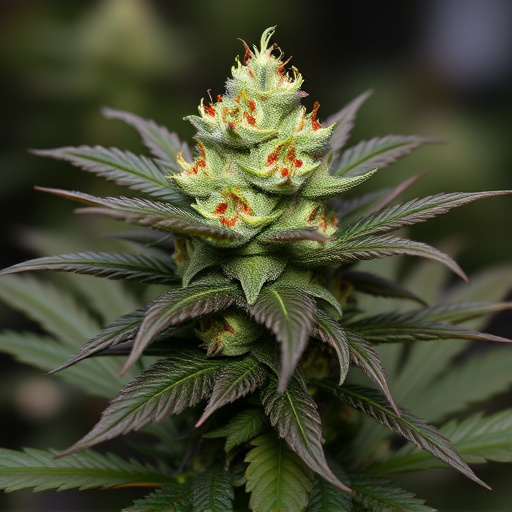
In cannabis cultivation, understanding the intricate dance between genetics and temperature is key to achieving desired appearances in plants, especially when aiming for specific traits like those found in indica dominant hybrid strains. Genetic modifications play a pivotal role here, allowing cultivators to fine-tune characteristics such as shape, size, and overall aesthetic appeal. By manipulating genetic codes, breeders can create hybrids with distinctive features that thrive under controlled environmental conditions.
Temperature acts as a powerful regulator, influencing the expression of these genetically modified traits. Optimal temperatures prompt cannabis plants to manifest their genetic potential, leading to more compact, dense buds—a hallmark of many indica dominant hybrid strains. This interaction underscores the importance of climate control in cultivation settings, where precise temperature management facilitates the development of visually striking and high-quality cannabis crops.
In conclusion, understanding the intricate relationship between genetics and temperature is key to cultivating ideal cannabis plants. The unique traits of indica dominant hybrid strains, guided by genetic modifications, allow growers to achieve desired appearances while optimizing environmental conditions, particularly temperature. This knowledge empowers cultivators to create vibrant, diverse cannabis varieties that cater to both visual appeal and desired effects.




